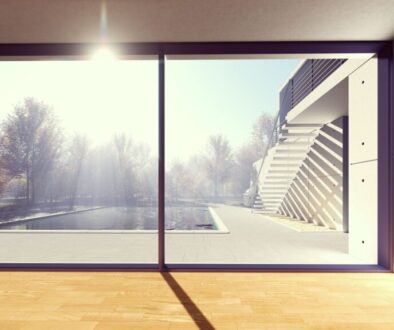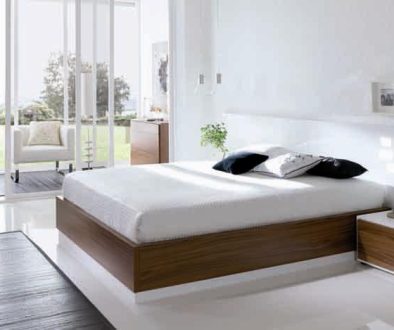Japanese-style decorating to achieve balance in your home
Japanese-style décor has become increasingly popular in recent years, and it's not hard to see why. The minimalism and simplicity of the Japanese aesthetic can help create a calm and relaxing atmosphere in your home. In addition, the philosophy behind the Japanese style focuses on balance and harmony, which can be beneficial to your mental and emotional well-being.
Characteristics of Japanese style decoration
- Minimalism: Japanese aesthetics focus on simplicity and the elimination of unnecessary elements. In Japanese decoration, less is more. This applies even to those who make removals to large cities.
- Nature: Nature is a fundamental element in Japanese-style decoration. Plants, gardens and wood are used to bring a little bit of the outdoors inside the house.
- Harmony: Japanese decoration seeks to create balance and harmony in each space of the house. The elements must be balanced and in tune with each other.
- Calm: The Japanese aesthetic aims to create a calm and relaxing atmosphere. Soft colours and subdued lighting are common features of Japanese décor.
Here are the main keys to decorating in Japanese style:
Base units: In the oriental culture Almost all daily actions are performed on the floor (even eating). It is therefore very common for furniture to have no legs and to rest directly on the floor. The mats, futons y tatamis are very common in this style. The furniture storage services are very common in Japan, because the furniture is low and space-saving.
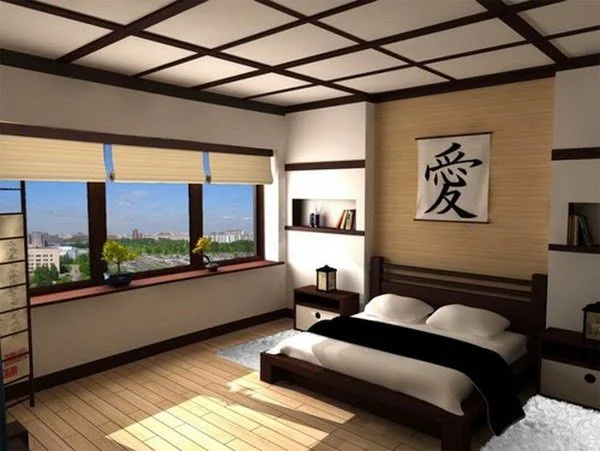
- The natural features have a special prominence in this style. Most of the materials used in the furniture are wood, rice paper and stone; in addition to natural fibres such as cotton, linen and silk.
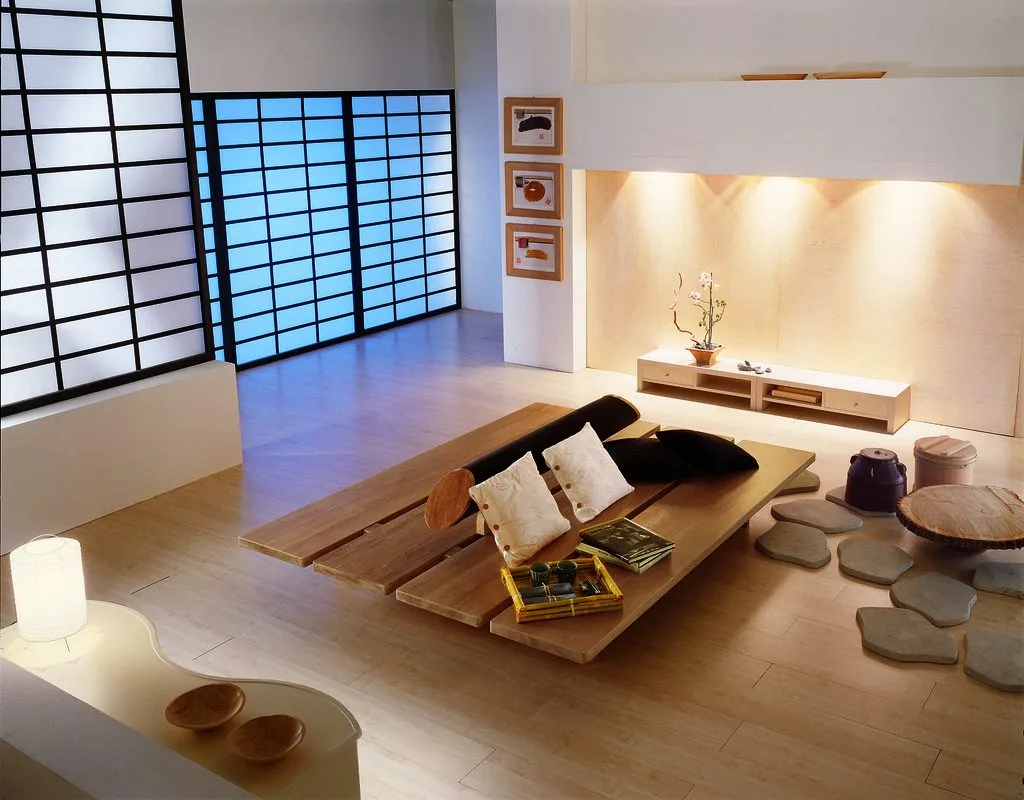
Source: Decopasion - Neutral colours. Beige, white and light browns are the most popular. base tones of this style. These are combined with black and dark brown to styling spaces. More vivid colours such as orange, green or red may be present but in small details.
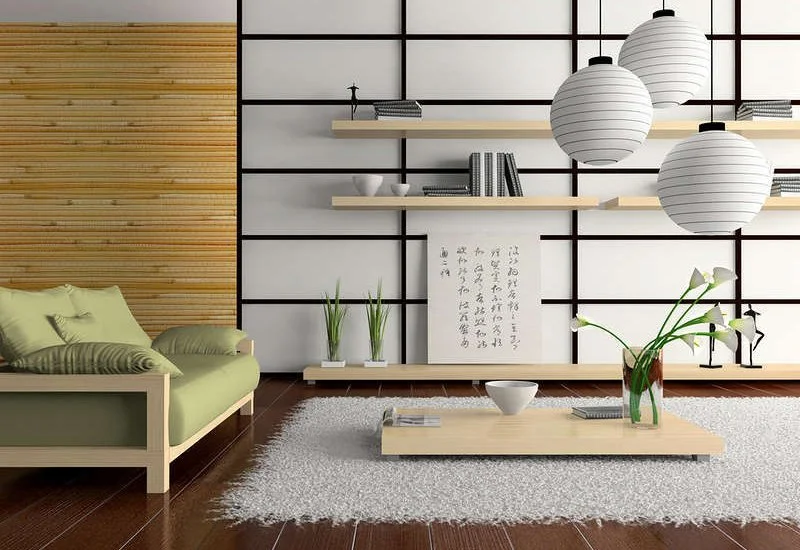
Source: Style-and-home - Lighting. In order to achieve a zen style in full it is necessary to have as much natural or indirect lighting possibleThe Commission will not be able to ensure that this does not clash with the rest of the decoration. Lamps with simple designs or lampshades made of rice paper are the most common.
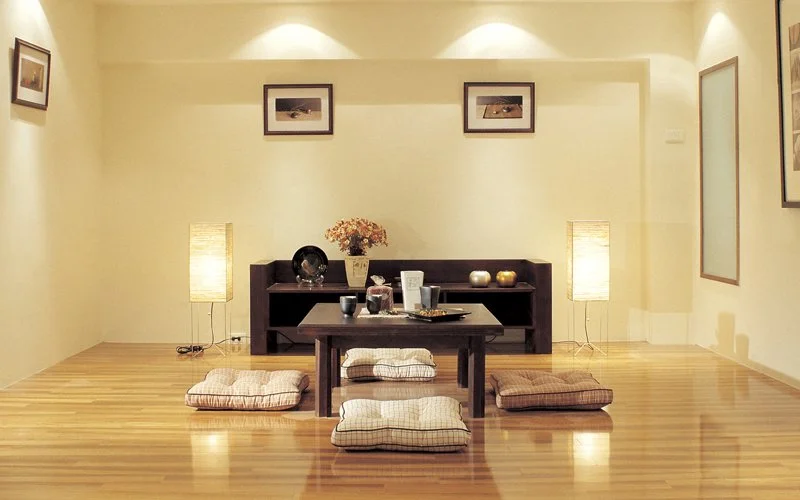
Source: I-decoracion - Decorative accessories. It is necessary to find elements that create contrasts and balance. The choice of accessories is very important because they should not overload the space. The most common are the Buddhist figurines, stone fountains and incenses. Bonsai, bamboo or cherry blossoms can be used to add a floral or more natural touch.
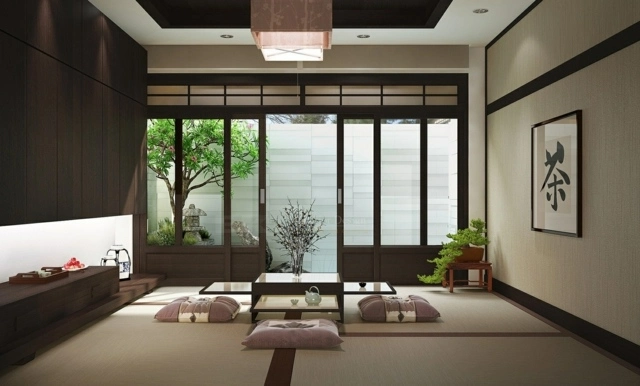
Source: Casaydiseno
If you are looking to surround yourself with good energythe decoration in Japanese style will be your ally. Look for the balance you need.
How to incorporate Japanese style into your home
If you are thinking of making a removal of Madrid, Barcelonaor any part of the national territoryIf you're looking to incorporate the style into your home, you should consider it:
Eliminate unnecessary objects and keep only what is functional and aesthetically pleasing. Less is more in Japanese decoration. Use simple, minimalist furniture.
2. Incorporate nature
Add plants and flowers, and use materials such as wood and stone to create a natural ambience. If you have a garden, make sure it looks good from inside the house.
3. Create harmony
The elements should be balanced and in harmony. Use decorative objects that complement each other and avoid overloading spaces. An example of how to create harmony is to put a plant in one corner, and in another corner use a piece of art.
4. Soft colours
Soft colours are a common feature of Japanese décor. Use shades such as white, beige and grey to create a calm and relaxing atmosphere. You can also use blue and green, which are colours that evoke nature.
5. Subdued lighting
Soft lighting can be very effective in creating a relaxing atmosphere in your home. Use table lamps and candles to provide soft, warm light. You can also use Japanese panels to filter natural light.
6. Tatami
Tatami is a type of traditional Japanese carpet that is used as flooring in homes. If you want an authentic Japanese style, you can use tatami in some areas of your home.
7. Shoji
Shojis are Japanese panels that are used to divide spaces and filter natural light. They can also be used as sliding doors for wardrobes or bathrooms.
Conclusion
Decorating in Japanese style can be a great way to create a calm and relaxing atmosphere in your home. Use the tips we've given you to incorporate Japanese elements into your décor and create a balanced and harmonious space. Remember that simplicity is the key, and that each element should be in balance with the rest. Good luck!



